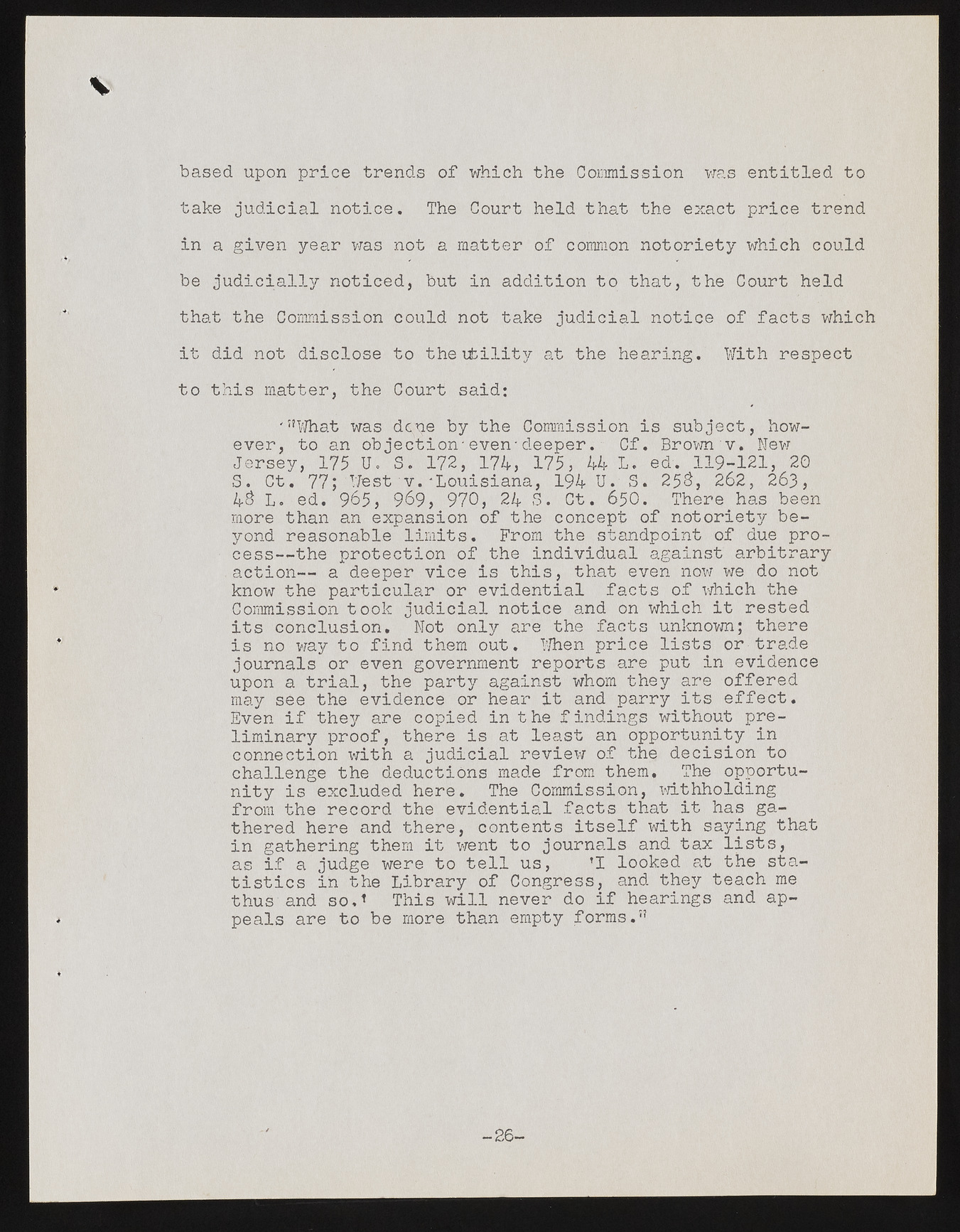Copyright & Fair-use Agreement
UNLV Special Collections provides copies of materials to facilitate private study, scholarship, or research. Material not in the public domain may be used according to fair use of copyrighted materials as defined by copyright law. Please cite us.
Please note that UNLV may not own the copyright to these materials and cannot provide permission to publish or distribute materials when UNLV is not the copyright holder. The user is solely responsible for determining the copyright status of materials and obtaining permission to use material from the copyright holder and for determining whether any permissions relating to any other rights are necessary for the intended use, and for obtaining all required permissions beyond that allowed by fair use.
Read more about our reproduction and use policy.
I agree.Information
Digital ID
Permalink
Details
Member of
More Info
Rights
Digital Provenance
Publisher
Transcription
V based upon price trends of which the Commission was entitled to take judicial notice. The Court held that the exact price trend in a given year was not a matter of common notoriety which could be judicially noticed, but in addition to that, the Court held that the Commission could not take judicial notice of facts which it did not disclose to the utility at the hearing. With respect to this matter, the Court said: '”What was dene by the Commission is subject, however, to an objection-even-deeper. Cf. Brown v. New Jersey, 175 U. S. 172, 174, 175, 44 L. ed. 119-121, 20 S. Ct. 77; West v.'Louisiana, 194 U. S. 25$, 262, 263, 4$ L. ed. 965, 969, 970, 24 S. Ct. 650. There has been more than an expansion of the concept of notoriety beyond reasonable limits. From the standpoint of due process—the protection of the individual against arbitrary action— a deeper vice is this, that even now we do not know the particular or evidential facts of which the Commission took judicial notice and on which it rested its conclusion. Not only are the facts unknown; there is no way to find them out. When price lists or trade journals or even government reports are put in evidence upon a trial, the party against whom they are offered may see the evidence or hear it and parry its effect. Even if they are copied in the findings without preliminary proof, there is at least an opportunity in connection with a judicial review of the decision to challenge the deductions made from them. The opportunity is excluded here. The Commission, withholding from the record the evidential facts that it has gathered here and there, contents itself with saying that in gathering them it went to journals and tax lists, as if a judge were to tell us, ’I looked at the statistics in the Library of Congress, and they teach me thus and so,* This will never do if hearings and appeals are to be more than empty forms.” 26-

